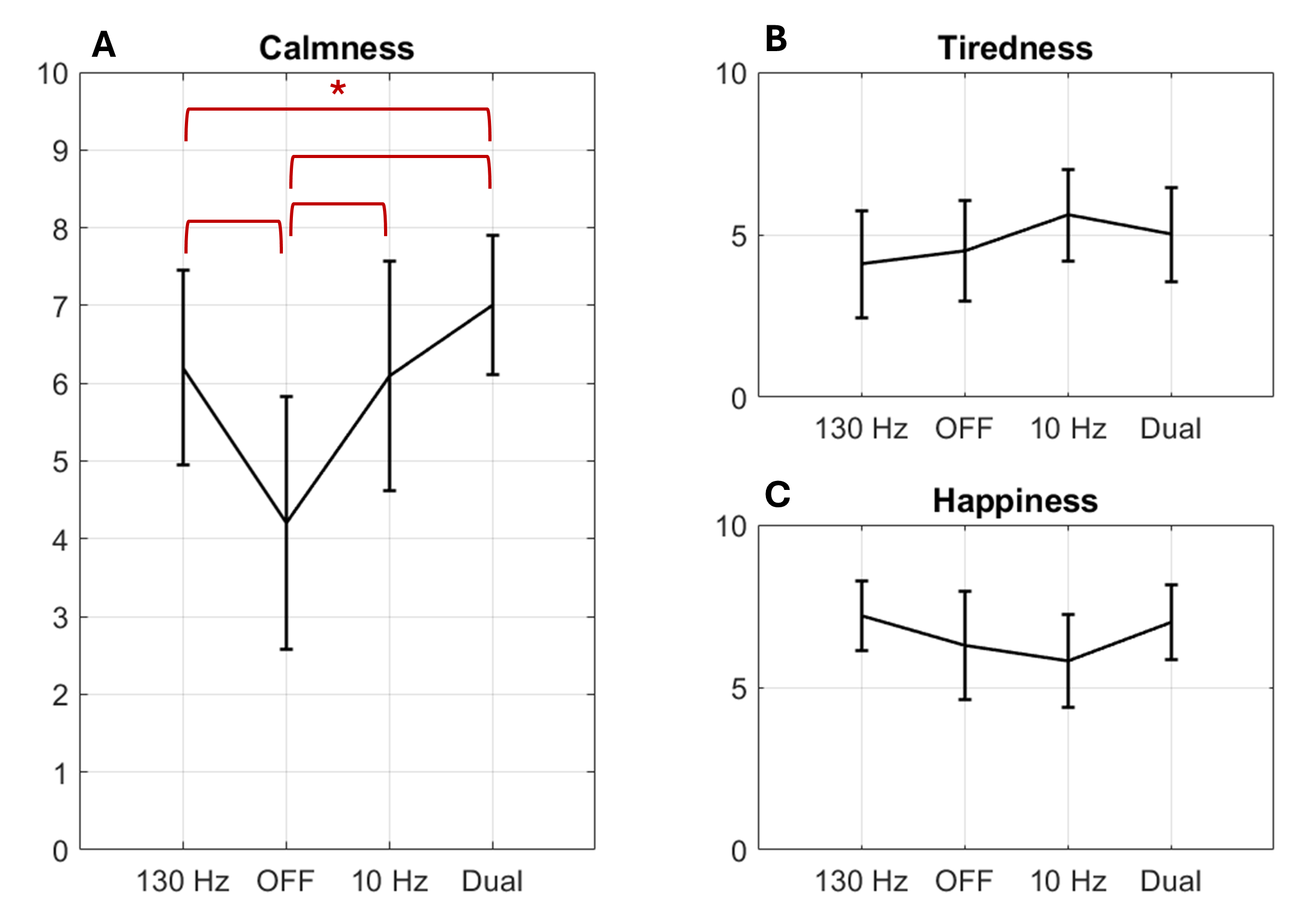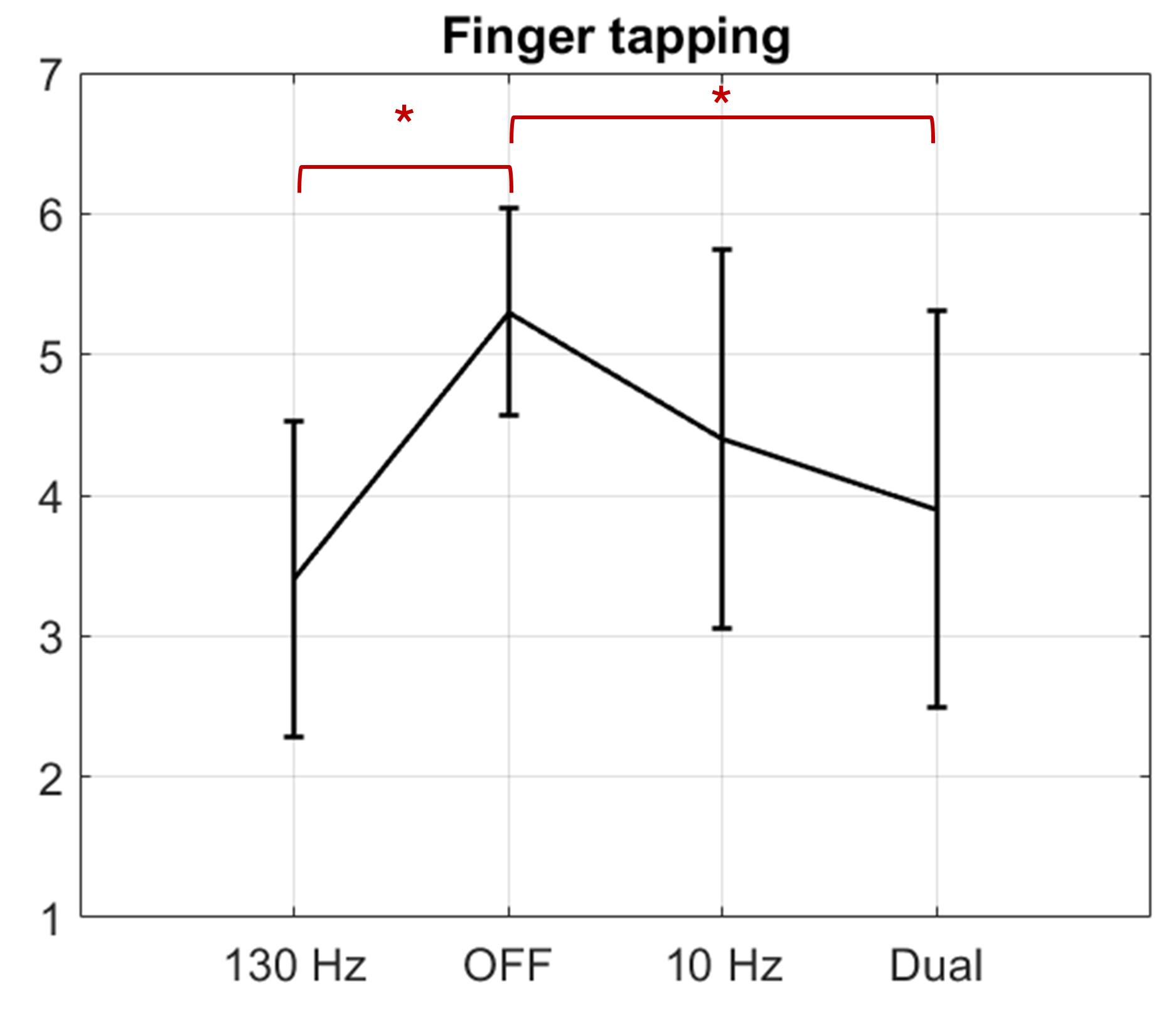Category: Parkinson's Disease: Non-Motor Symptoms
Objective: To evaluate the effect on emotional states of dual frequency STN-DBS (high frequency + low frequency) as compared to high frequency or low frequency stimulation alone and to OFF stimulation.
Background: High frequency deep brain stimulation of the subthalamic nucleus (STN-DBS) is a well-established therapy for Parkinson’s disease (PD) motor symptoms, however its effect on non-motor symptoms is still controversial. The application of low frequency DBS has been shown to improve emotional processing and cognition in PD although its effects on motor functions are often not optimal. Dual stimulation combining high and low frequencies stimulation in two different contacts may be a possible intervention to target both motor and non-motor aspects of the disease.
Method: In this randomized, single-blind trial we tested the sub-acute effect of high-frequency (130Hz), low-frequency (10Hz) and dual high+low frequency stimulation as compared to no stimulation (OFF) on the emotional state of 12 PD patients (age=64.2±8.1 years, disease duration=17.8±6.6 years) with bilateral STN-DBS.
In each condition, participants completed a momentary assessment of their emotional states: happy/sad, tired/energized, and calm/stressed, using a visual analog scale ranging from 0 to 10. Motor functions were rated with a finger tapping score.
Friedman test was conducted to determine whether emotional states differ with the different stimulation conditions. Post-hoc analysis was performed with Wilcoxon test.
Results: There was a significant difference in the effect of the stimulation conditions on calmness/stress (χ2(3)=13.0, p=0.002). The post-hoc analysis showed that patients felt calmer in the three stimulation conditions (high p=0.02, low p=0.01, dual stimulation p=0.01) as compared to the OFF condition. They felt significantly calmer in the dual stimulation condition than in the high frequency condition (p=0.04). No effect of stimulation was revealed on happiness or tiredness.
There was a significant effect of stimulation condition on motor function (χ2(3)=12.1, p=0.007), indeed high frequency and dual stimulation improved it more than no stimulation (p=0.01, 0.05).
Conclusion: Our findings suggest that there is a positive effect of STN-DBS on emotional state in people with PD especially combining high and low frequencies stimulation.
Fig.1 VAS values of emotional state (mean ± 2SE)
Fig 2. Finger tapping score (mean ± 2SE)
To cite this abstract in AMA style:
E. Pegolo, F. Cucinotta, I. Hossain, B. Ishihara, M. Hart, E. Pereira, F. Morgante, A. Fasano, L. Ricciardi. Dual Frequency Stimulation of the Subthalamic Nucleus Improves Emotional State in Parkinson’s Disease [abstract]. Mov Disord. 2024; 39 (suppl 1). https://www.mdsabstracts.org/abstract/dual-frequency-stimulation-of-the-subthalamic-nucleus-improves-emotional-state-in-parkinsons-disease/. Accessed October 17, 2025.« Back to 2024 International Congress
MDS Abstracts - https://www.mdsabstracts.org/abstract/dual-frequency-stimulation-of-the-subthalamic-nucleus-improves-emotional-state-in-parkinsons-disease/


